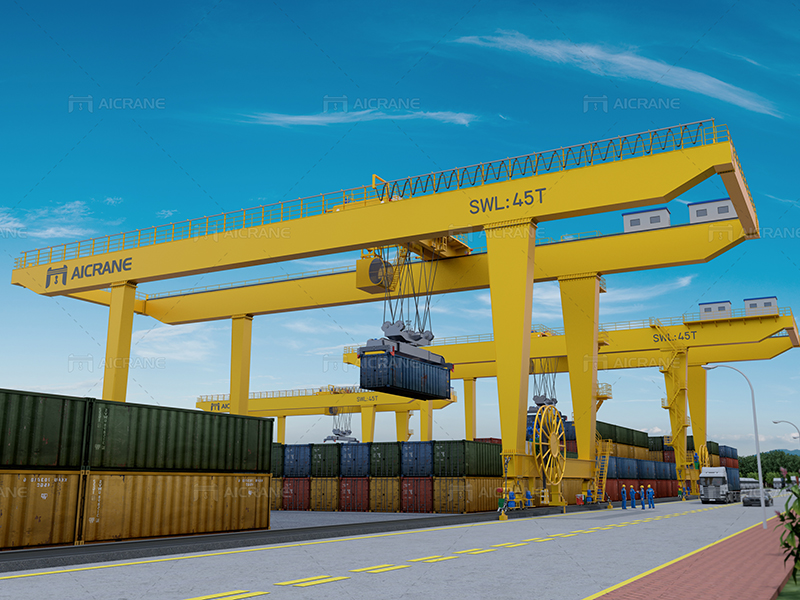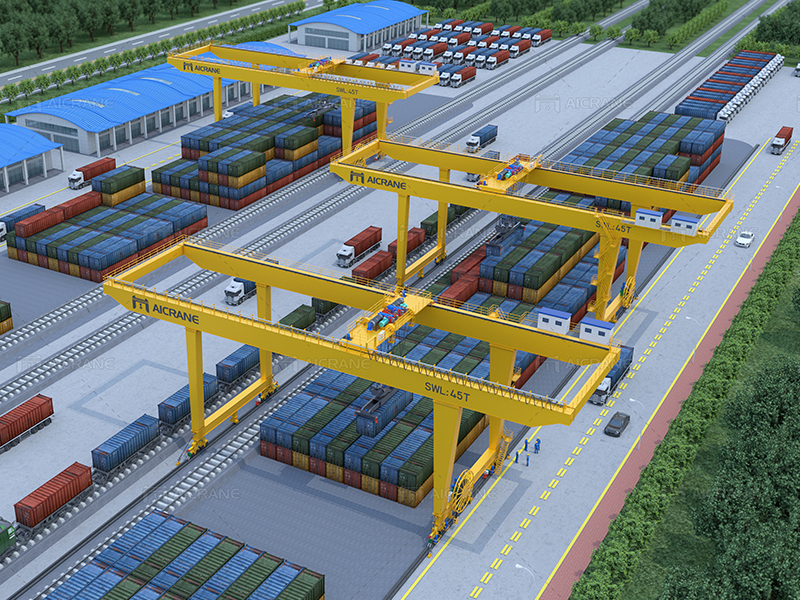Rail-mounted gantry cranes (RMGCs) play a pivotal role in the efficient and seamless operation of railway applications. These specialized cranes are designed to handle the loading and unloading of freight containers onto and off of trains, making them a crucial component of modern logistics and transportation systems. In this article, we will delve into the key features, benefits, and applications of rail-mounted gantry cranes, shedding light on their significance in the railway industry.

Key Features of Rail-Mounted Gantry Cranes:
Rail Mobility: One of the defining features of rail mounted gantry cranes is their ability to move along a rail track. This mobility ensures precise positioning of the crane, allowing it to access various points along the railway and reach different tracks as needed. The rail-mounted design enhances operational flexibility and efficiency.
Heavy Lifting Capacity: Rail-mounted gantry cranes are engineered to handle heavy loads with ease. With lifting capacities ranging from tens to hundreds of tons, these cranes are capable of efficiently lifting and moving containers of varying sizes and weights, making them indispensable in the handling of cargo at railway terminals.
Span and Outreach: RMGCs are equipped with a wide span and outreach capabilities. This enables them to cover a large working area, reaching multiple rail tracks and facilitating the efficient transfer of containers between trains and other modes of transportation, such as trucks or ships.
Stacking Height: To maximize the utilization of space in railway yards, rail-mounted gantry cranes are designed to lift containers to significant stacking heights. This feature is crucial in optimizing storage capacity and streamlining the handling of large volumes of cargo in rail terminals.

Applications of Rail-Mounted Gantry Cranes:
Railway Container Terminals: RMGCs are predominantly used in railway container terminals where they contribute to the seamless transfer of containers between trains and other modes of transportation. Their rail mobility ensures quick and precise positioning, expediting the loading and unloading processes.
Intermodal Yards: In intermodal transportation, where containers move across different modes such as rail, road, and sea, rail-mounted gantry cranes are employed in intermodal yards. These cranes facilitate the smooth transition of containers between trains and trucks, enabling efficient door-to-door logistics.
Logistics Hubs: Logistics hubs that serve as central points for the distribution of goods often utilize RMGCs to handle the high volume of containers arriving and departing via railway. The ability of these railway gantry cranes to stack containers at significant heights optimizes space and enhances the overall efficiency of the logistics hub.
Benefits of Rail-Mounted Gantry Cranes:
Operational Efficiency: The rail-mounted design allows for swift and precise movements, reducing the time required for container handling. This operational efficiency translates into faster turnaround times for trains and increased overall throughput in railway terminals.
Space Optimization: The stacking height capability of RMGCs is instrumental in optimizing the use of available space in railway yards and terminals. This is particularly crucial in urban areas where land is often limited, and efficient space utilization is imperative.
Versatility: Rail-mounted gantry cranes are versatile in their application. Their adaptability to different rail tracks and container sizes makes them a valuable asset in diverse railway environments, contributing to the flexibility of logistics operations.
Conclusion:
Rail-mounted gantry cranes are integral to the smooth functioning of railway applications, providing a robust solution for the handling of freight containers. Their rail mobility, heavy lifting capacity, and versatility make them a cornerstone in modern logistics and transportation systems. As the demand for efficient and sustainable freight transport continues to grow, the importance of rail-mounted gantry cranes in the railway industry is poised to remain significant.
